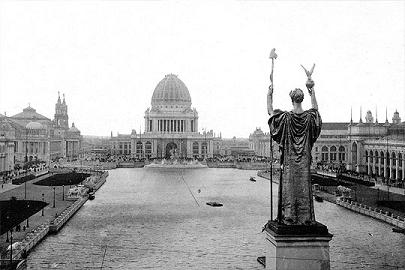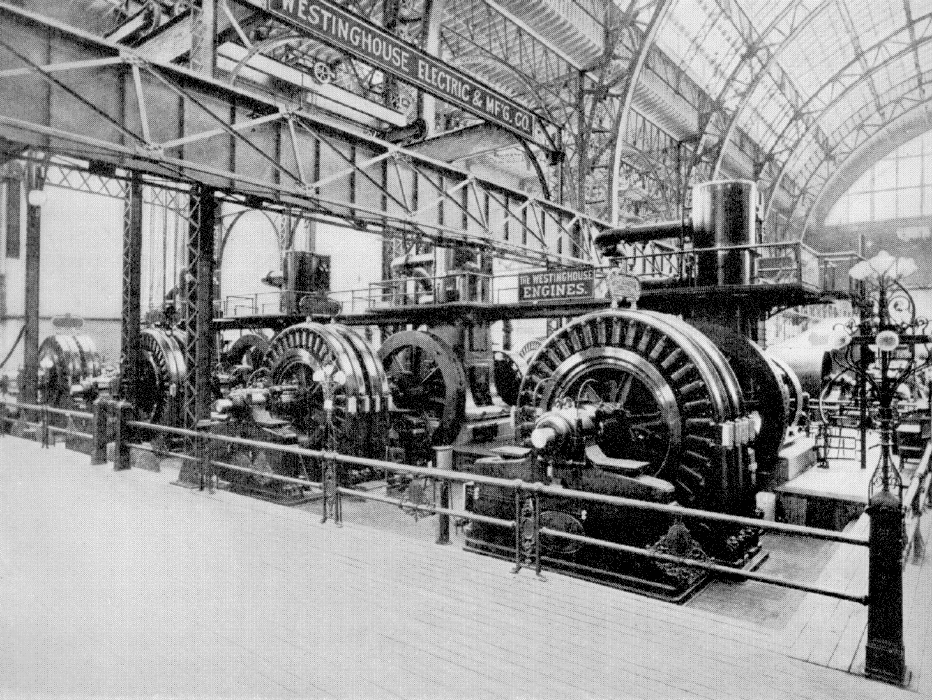1893 Columbian Exposition
Despite all of Edison's efforts to smear AC power transmission, in 1892 the Westinghouse Electric Company was awarded the contract to provide lighting for the 1893 World's Columbian Exposition in Chicago, Illinois. It was a massive undertaking, one that was made even more difficult by Edison. Six months prior to the opening of the World's Fair, with all of the lighting equipment and generator's already installed, Edison won a patent dispute over the use of the one-piece incandescent light bulb, the superior lightbulb at the time, and Westinghouse was forbidden from using the lightbulb at the fair. Fortunately, years earlier Westinghouse had purchased the patent for the Sawyer-Man incandescent lamp, which was upheld by the courts as an independent patent. Westinghouse rushed to manufacture enough of these for the World's Fair, and by the opening of the fair 250 thousand of the incandescent lights were produced, which was estimated to be about 25% of the bulbs ever produced up until that moment.
The fair turned out to be a huge success. In its six month run, over 28 million people visited the fair. In the Great Hall of Electricity, Tesla's polyphase AC power system was on display for the whole world to see, and in the Hall of Machinery visitors could see the massive generators that powered the fair. The world was stunned in awe, and the 1893 World's Columbian Exposition proved to be the final nail in the coffin for opposition to AC power.

Court of Honor and Grand Basin of the 1893 Columbian Exposition

Four of Twelve Polyphase AC Generators at the 1893 Columbian Exposition